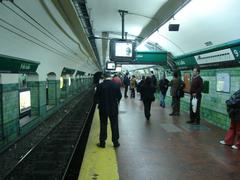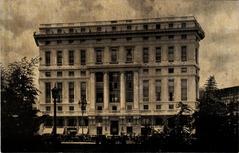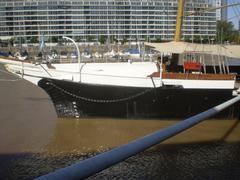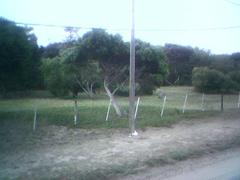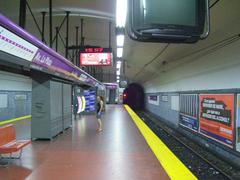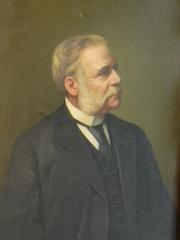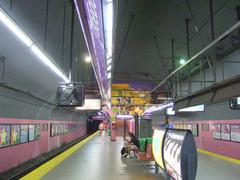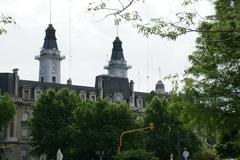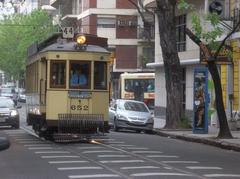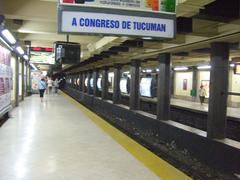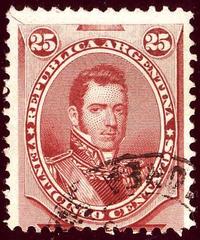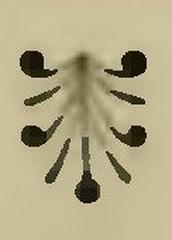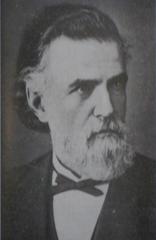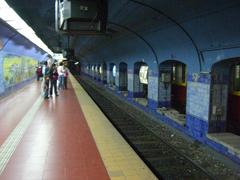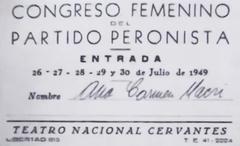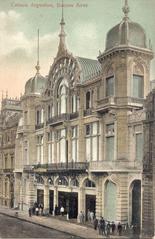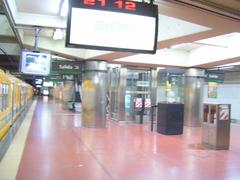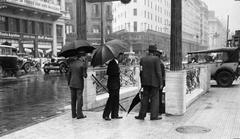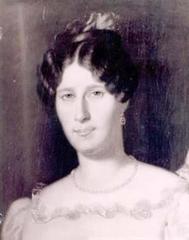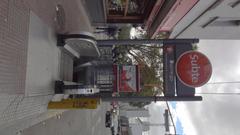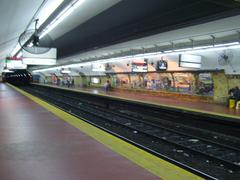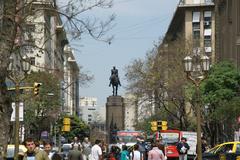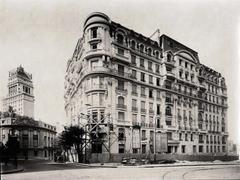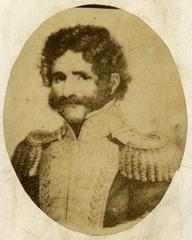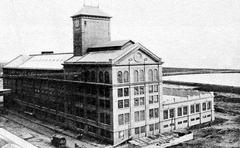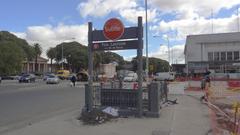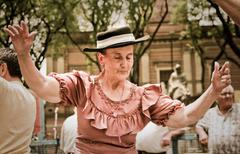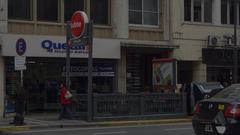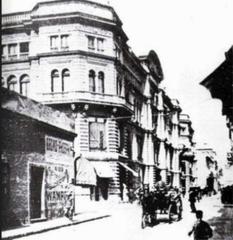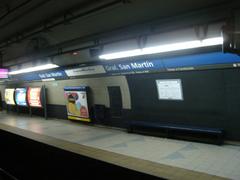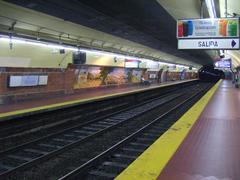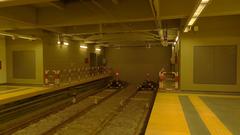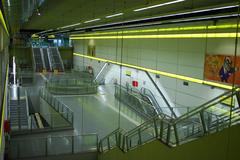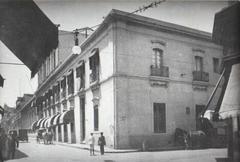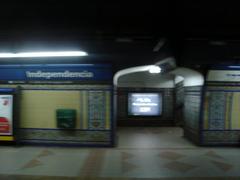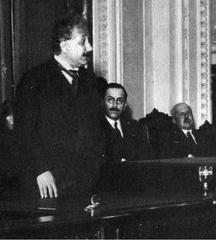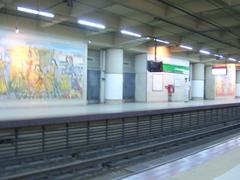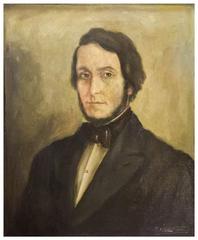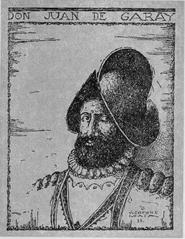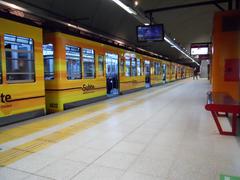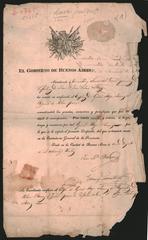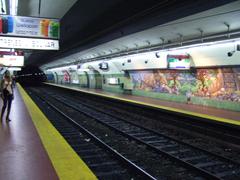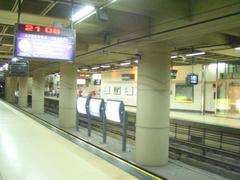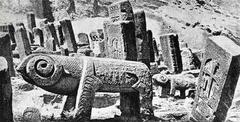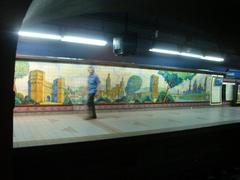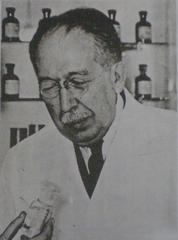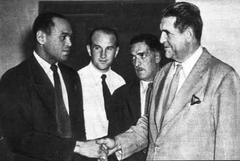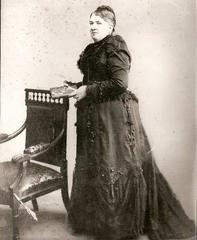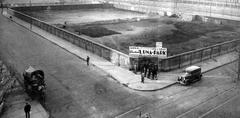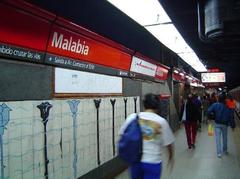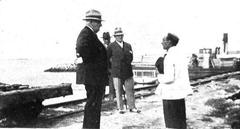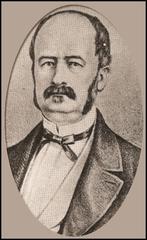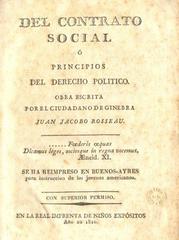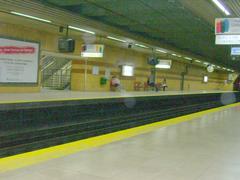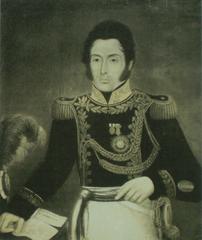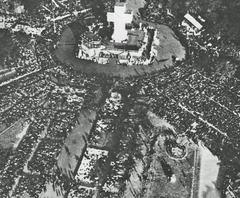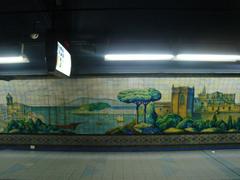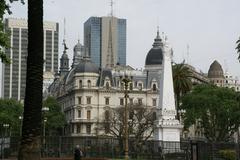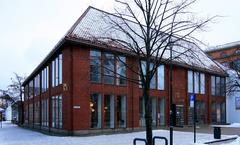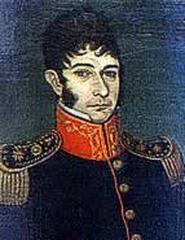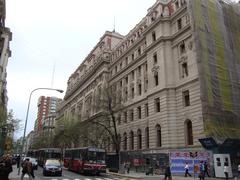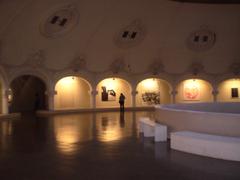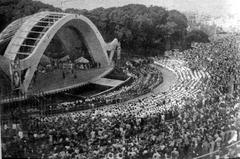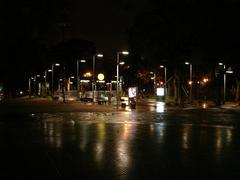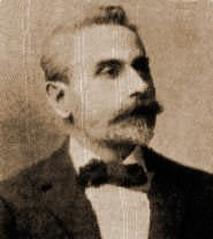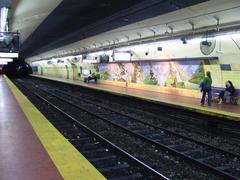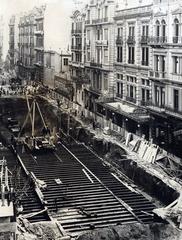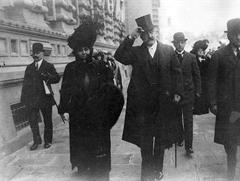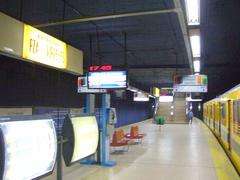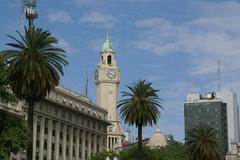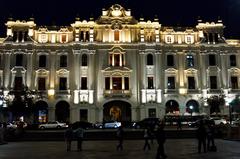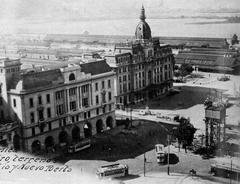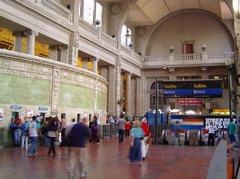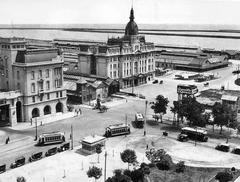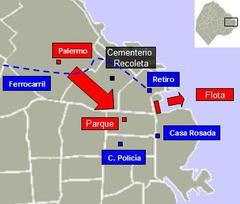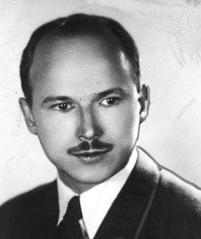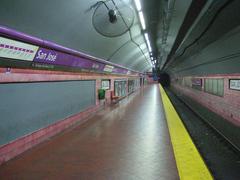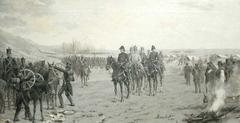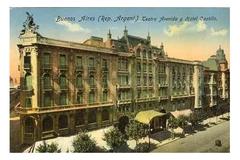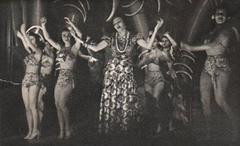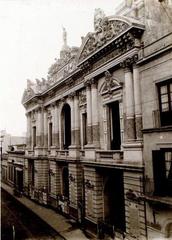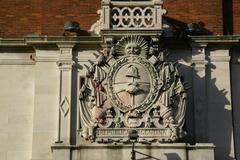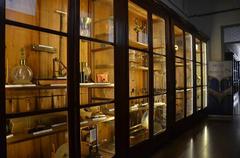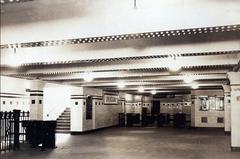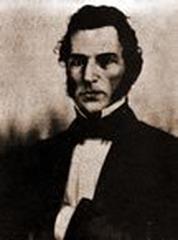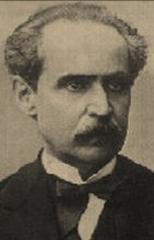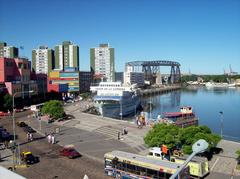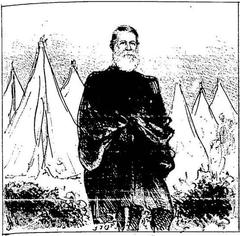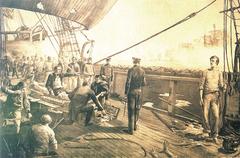Visiting Hours, Tickets, and Historical Insights on Plaza Inmigrantes de Armenia, Buenos Aires
Date: 17/07/2024
Introduction
Plaza Inmigrantes de Armenia, located in the lively Palermo Soho neighborhood of Buenos Aires, Argentina, is a remarkable urban space that celebrates the rich cultural heritage and contributions of Armenian immigrants. Inaugurated in 1981, the plaza stands as a tribute to the resilience and perseverance of the Armenian community, which established itself in Buenos Aires in the early 20th century. The Armenian presence in Argentina was significantly influenced by the Armenian Genocide of 1915-1923, during which thousands of Armenians sought refuge in countries with open immigration policies, including Argentina. Today, the plaza not only serves as a symbol of Armenian heritage but also as a vibrant hub for cultural activities and community events. Visitors can explore the beautifully landscaped gardens, historical monuments, and enjoy various cultural and recreational activities. The plaza is a testament to Buenos Aires’ diverse cultural fabric and a must-visit destination for anyone interested in exploring the city’s historical and cultural landmarks. For more detailed visitor information, historical context, and travel tips, continue reading this comprehensive guide. (Buenos Aires tourism website)
Table of Contents
- Introduction
- Historical Background
- Visitor Information
- Architectural and Cultural Features
- Impact on the Local Community
- Preservation and Maintenance
- Educational Initiatives
- Future Prospects
- FAQ
- Conclusion
Historical Background
Origins and Establishment
Plaza Inmigrantes de Armenia, located in the Palermo neighborhood of Buenos Aires, Argentina, is a significant urban space that reflects the rich history of Armenian immigration to the country. The plaza was officially inaugurated in 1981, a period marked by the Argentine government’s efforts to recognize and celebrate the diverse cultural contributions of immigrant communities. The establishment of the plaza was part of a broader initiative to honor the Armenian community, which had been a vital part of Buenos Aires since the early 20th century.
Armenian Immigration to Argentina
The Armenian presence in Argentina dates back to the late 19th and early 20th centuries, primarily driven by the Armenian Genocide of 1915-1923. During this period, thousands of Armenians fled the Ottoman Empire to escape persecution and violence. Argentina, known for its relatively open immigration policies at the time, became a refuge for many Armenian families. By the 1920s, a significant Armenian community had established itself in Buenos Aires, contributing to the city’s cultural and economic landscape.
Significance of the Plaza
The naming of the plaza as “Inmigrantes de Armenia” is a tribute to the Armenian immigrants who have played a crucial role in the development of Buenos Aires. The plaza serves as a symbol of the resilience and perseverance of the Armenian people, as well as their successful integration into Argentine society. It is a place where the Armenian community can celebrate their heritage and share it with the broader public.
Visitor Information
- Opening Hours - The plaza is open to the public 24/7.
- Tickets - Entry to Plaza Inmigrantes de Armenia is free of charge.
- Travel Tips - The plaza is easily accessible by public transportation. Nearby attractions include the Botanical Garden and the Evita Museum.
- Accessibility - The plaza is wheelchair accessible, with paved paths and ramps.
Architectural and Cultural Features
Khachkar Monument
One of the most notable features is the Khachkar, a traditional Armenian cross-stone, which was installed in the plaza in 2001. Khachkars are significant in Armenian culture, symbolizing faith, art, and national identity. The presence of this monument in the plaza underscores the deep cultural ties between the Armenian community and their homeland.
Commemorative Events and Activities
Plaza Inmigrantes de Armenia is not just a static monument but a vibrant space for cultural activities and commemorative events. Each year, the Armenian community in Buenos Aires organizes events to mark important dates such as the anniversary of the Armenian Genocide on April 24th. These events often include cultural performances, exhibitions, and public speeches, fostering a sense of community and remembrance.
Impact on the Local Community
The establishment of Plaza Inmigrantes de Armenia has had a profound impact on the local community in Palermo. It has become a focal point for cultural exchange and dialogue, promoting understanding and appreciation of Armenian heritage among the residents of Buenos Aires. The plaza also attracts tourists who are interested in learning about the diverse cultural fabric of the city.
Preservation and Maintenance
Maintaining the historical and cultural integrity of Plaza Inmigrantes de Armenia is a priority for both the Armenian community and the local government. Efforts are made to preserve the monuments and ensure that the plaza remains a welcoming and informative space for visitors. The local government, in collaboration with Armenian cultural organizations, regularly undertakes initiatives to clean and restore the plaza, ensuring its longevity as a cultural landmark.
Educational Initiatives
In addition to its role as a cultural and commemorative space, Plaza Inmigrantes de Armenia serves an educational purpose. Schools and universities in Buenos Aires often organize field trips to the plaza, where students can learn about Armenian history and the broader context of immigration in Argentina. Educational plaques and guided tours provide visitors with detailed information about the significance of the plaza and the history of the Armenian community in Buenos Aires.
Future Prospects
Looking ahead, Plaza Inmigrantes de Armenia is expected to continue playing a vital role in the cultural and social life of Buenos Aires. Plans are underway to enhance the plaza with additional monuments and informational displays, further enriching the visitor experience. The ongoing commitment to preserving and celebrating Armenian heritage ensures that the plaza will remain a cherished landmark for future generations.
FAQ
- What are the visiting hours for Plaza Inmigrantes de Armenia?
- The plaza is open 24/7.
- Do I need to buy tickets to visit the plaza?
- No, entry is free of charge.
- How can I get to Plaza Inmigrantes de Armenia?
- The plaza is easily accessible by public transportation, with several bus lines and the Palermo subway station nearby.
- Is Plaza Inmigrantes de Armenia wheelchair accessible?
- Yes, the plaza is wheelchair accessible, with ramps and smooth pathways.
Conclusion
Plaza Inmigrantes de Armenia is more than just an urban park; it is a cultural and historical landmark that encapsulates the rich heritage and contributions of the Armenian community in Buenos Aires. Open 24/7 and free of charge, the plaza offers a serene escape with its beautiful landscapes, historical monuments, and vibrant cultural activities. Whether you’re a local or a tourist, a visit to this plaza provides a unique opportunity to immerse yourself in the diverse cultural tapestry of Buenos Aires. The ongoing efforts to preserve and celebrate Armenian heritage ensure that Plaza Inmigrantes de Armenia will remain a cherished landmark for future generations. Don’t miss the chance to explore this significant site and its surrounding attractions in the vibrant Palermo Soho neighborhood. For more information on visiting hours, special events, and nearby attractions, visit the Buenos Aires tourism website.
